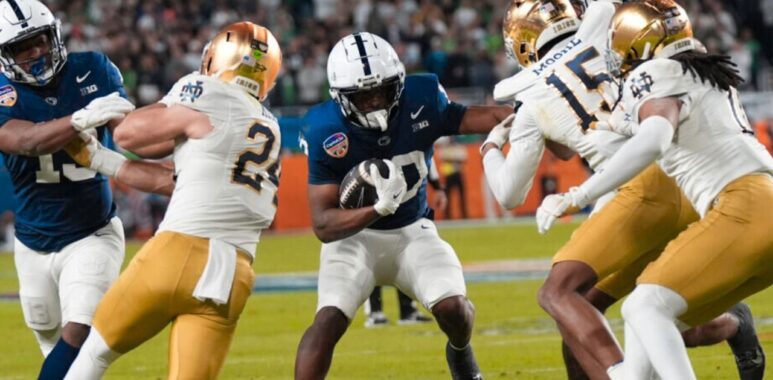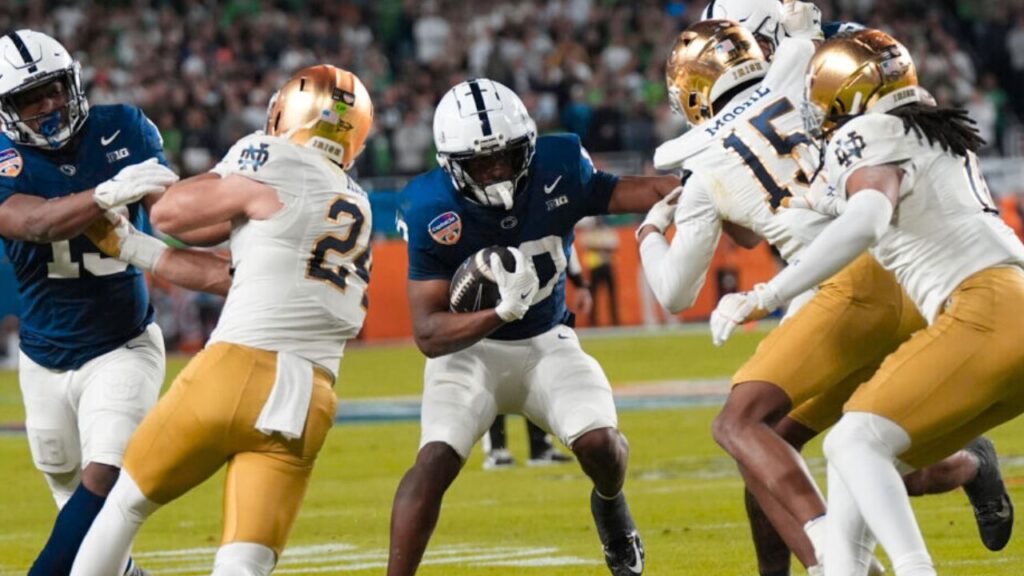
NCAAF Explained: Everything You Need to Know About College Football

The Thrilling World of College Football
football represents one of America’s most passionate and tradition-rich sports, captivating millions of fans every fall weekend. Unlike professional football, NCAAF (National Collegiate Athletic Association Football) blends high-level competition with school pride, historic rivalries, and the raw emotion of student-athletes playing for more than just a paycheck. This comprehensive guide will walk you through everything from basic rules to advanced strategies while highlighting the 7 reflexes that distinguish elite college players as they compete under the bright lights of Saturday showdowns.
Understanding NCAAF Structure and Divisions
College football operates under a unique organizational system that differs significantly from professional leagues:
NCAA Football Subdivisions:
- FBS (Football Bowl Subdivision)
- 133 teams across 10 conferences
- Power Five conferences (SEC, Big Ten, ACC, Big 12, Pac-12)
- Group of Five conferences (AAC, C-USA, MAC, MW, Sun Belt)
- Eligible for bowl games and College Football Playoff
- FCS (Football Championship Subdivision)
- 128 teams competing in playoff tournament
- Includes Ivy League and historic programs like North Dakota State
- Division II & III
- Smaller schools with scholarship limitations
- D-II has playoff, D-III focuses on academic balance
Basic Rules: How College Football Works
NCAAF games follow most standard football rules with several key differences from the NFL:
Game Format:
- Four 15-minute quarters
- Overtime: Alternating 2-point conversion attempts after 2OT
- Clock stops: For first downs (until final 2 minutes of each half)
- Play clock: 40 seconds between plays
Scoring System:
- Touchdown: 6 points
- Extra point: 1 (kick) or 2 (conversion play) points
- Field goal: 3 points
- Safety: 2 points
Key Rule Variations:
- One-foot inbounds for completed catches (vs. NFL’s two)
- Kickoffs: From 35-yard line with fair catch option
- Targeting: Automatic ejection for dangerous hits
The 7 Reflexes That Create College Football Stars
The most exciting NCAAF players combine raw athleticism with instinctive reactions. These are the critical skills scouts evaluate:
1. Quarterback’s Pre-Snap Diagnosis
- Reading defensive alignments
- Identifying blitz packages
- Adjusting protections
- Example: Alabama’s Bryce Young recognizing coverages
2. Receiver’s Adjustment Mid-Route
- Tracking deep balls over either shoulder
- Body control on sideline catches
- Securing contested catches
- Example: Ohio State’s Marvin Harrison Jr.’s toe-tap grabs
3. Running Back’s Instant Cut Ability
- Pressing holes before cutting
- Recognizing linebacker flow
- Accelerating through contact
- Example: Michigan’s Blake Corum’s vision between tackles
4. Defensive Back’s Break on the Ball
- Reading quarterback’s eyes
- Driving on underneath routes
- Playing the receiver’s hands
- Example: Illinois’ Devon Witherspoon’s anticipation
5. Pass Rusher’s Counter Moves
- Converting speed to power
- Swim/spin techniques
- Closing burst to quarterback
- Example: Will Anderson Jr.’s elite edge rush at Alabama
6. Linebacker’s Run/Pass Diagnosis
- Keying offensive linemen
- Sifting through traffic
- Dropping into coverage lanes
- Example: Clemson’s Jeremiah Trotter Jr.’s instincts
7. Special Teams’ Game-Changing Plays
- Punt returners making first man miss
- Gunners defeating double teams
- Kickers performing under pressure
- Example: Iowa’s Tory Taylor flipping field position
College Football vs. NFL: Key Differences
Understanding what makes NCAAF unique enhances appreciation for the game:
Atmosphere & Tradition:
- Marching bands and fight songs
- Student sections creating electric environments
- Historic rivalries (Army-Navy, Ohio State-Michigan)
- Bowl game celebrations
Structural Differences:
- 12-game regular season (vs. NFL’s 17)
- Postseason system (Bowl games vs. single playoff)
- NIL (Name, Image, Likeness) compensation
- Scholarship limits (85 for FBS teams)
Playing Style Variations:
- More diverse offensive schemes
- Greater emphasis on mobile quarterbacks
- Wider hash marks affecting play calling
- Less defensive specialization by position
How the College Football Playoff Works
The postseason system determines the national champion:
Selection Process:
- 12-team format beginning in 2024
- 6 conference champions + 6 at-large bids
- Selection committee ranks teams weekly
Tournament Structure:
- First Round: Campus sites (Dec 20-21, 2024)
- Quarterfinals: Fiesta, Peach, Rose, Sugar Bowls (Dec 31-Jan 1)
- Semifinals: Orange and Cotton Bowls (Jan 9-10, 2025)
- Championship: Atlanta (Jan 20, 2025)
Iconic NCAAF Traditions Explained
College football’s pageantry sets it apart:
Game Day Rituals:
- Dotting the “i” (Ohio State band)
- Howard’s Rock (Clemson entrance)
- Texas’ Hook ‘Em Horns
- Wisconsin’s Jump Around
Historic Trophies:
- Old Oaken Bucket (Purdue vs. Indiana)
- Paul Bunyan’s Axe (Minnesota vs. Wisconsin)
- The Keg of Nails (Cincinnati vs. Louisville)
How to Watch College Football Like an Expert
Elevate your viewing experience with these insights:
Focus Areas:
- Pre-snap adjustments (QB audibles, defensive shifts)
- Trench battles (O-line vs. D-line techniques)
- Special teams (often deciding close games)
- Coach signaling (play calls from sidelines)
- Player rotations (depth management strategies)
Advanced Stats to Track:
- Yards after contact (RB effectiveness)
- Passer rating under pressure
- Third down conversion rates
- Red zone efficiency
Recruiting and Development: The NCAAF Pipeline
Understanding how programs build rosters enhances fandom:
Recruiting Calendar:
- Early signing period (December)
- National signing day (February)
- Transfer portal windows (Spring and Winter)
Player Development Path:
- Redshirt year (preserving eligibility)
- Strength and conditioning programs
- Position-specific coaching
- NIL brand building
Conclusion: Your Complete College Football Education
NCAAF offers a uniquely American sporting experience that blends athletic excellence with institutional pride. As you dive deeper into the sport, watch for how the 7 reflexes manifest across different positions – from quarterbacks diagnosing coverages to defensive backs breaking on passes. These instinctive skills separate good players from program legends.
Whether you’re cheering for a powerhouse program or discovering a local FCS team, college football’s regional flavors and time-honored traditions create connections that last lifetimes. Use this guide as your roadmap through the rules, strategies, and culture that make Saturdays special from August through January.
